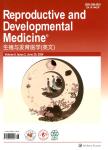Biosocial Profiles and Pattern of Complaints of New Intrauterine Device Acceptors at the University College Hospital,Ibadan,Nigeria
Biosocial Profiles and Pattern of Complaints of New Intrauterine Device Acceptors at the University College Hospital,Ibadan,Nigeria作者机构:Department of Obstetrics and Gynaecology University College Hospital/College of Medicine University of Ibadan Fertility Research Unit University College Hospital
出 版 物:《Journal of Reproduction and Contraception》 (生殖与避孕(英文版))
年 卷 期:2009年第20卷第2期
页 面:93-100页
学科分类:1004[医学-公共卫生与预防医学(可授医学、理学学位)] 1001[医学-基础医学(可授医学、理学学位)] 100404[医学-儿少卫生与妇幼保健学] 10[医学]
主 题:intrauterine device new acceptors contraception Nigeria
摘 要:Objective To determine the pattern of biosocial characteristics of the new IUD acceptors and describe their concerns. Methods This was a retrospective review of records of new IUD acceptors at the University College Hospital, Ibadan, Nigeria from January to December 2007. Results The age range of subjects was 19 to 49 years with a mean of 33.5 ±% 2.4 years. The commonest source (46.0%) of clientele referral was through the health care providers -doctors and nurse/midwife. Other referral patterns were from friends/ relative (23.5%), media -TV and radio (17.0%), outreach programmes (7.3%), self referral (5.2%) and others -the source was not indicated (1.2%). Of the total participants, only 239 (56.1%) reported for follow-up visits. Majority had at least one visit; about a third had two, while others had three or four and above visits. About 43.2% of those at follow-up visits had complaints. The commonest (37.5%) complaint was menstrual irregularity. Other complaints were cramping abdominal pain (22.2%), vaginal discharge (19.6%), amenorrhoea (10.3%), penile discomfort during sexual intercourse (4.3%), expulsion of IUD (3.8%) and 2.2% of missing IUD. Conclusion This audit shows that new IUD acceptors are largely referred by health care providers and are mainly offered the TCu380A version. Community outreach programmes as alternative strategy is likely to boost the uptake of this particular method in Nigeria.



